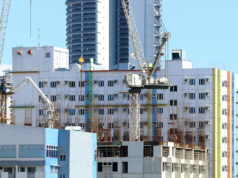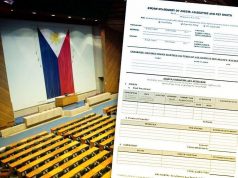THE Department of Transportation (DoTr) said it will proceed with a single-track and non-electrified system configuration of the Mindanao Railway Project, overruling appeals from the Davao Regional Development Council to adopt a two-track, electric configuration.
“We have an investment approval. Again, we are an implementing agency. We will implement what has been approved. We will implement it in a manner that makes it as much as possible simpler to upgrade or later on to convert it to a double-track and electrified system. That’s what we will do,” Transportation Undersecretary for Railways Timothy John R. Batan told BusinessWorld in a recent interview.
Single-track means trains have to be directed into sidings to give way to a train coming from the opposite direction. Single-track, however, is faster to build, a likely consideration for a government eager to claim at least partially-completed projects by the time it steps down in 2022.
The Davao Regional Development Council has sent a letter to the Transportation department appealing for a reversion to a two-track electric configuration.
“The decision to keep it as a single-track, non-electrified system is an investment decision made by… the National Economic and Development Authority (NEDA) Board. So we have our parameters; it has to be economically viable. As of now, it’s the single track, non-electrified configuration that was found to be economically viable by the NEDA Board, by the investment coordination committee. Does that mean it is going to be single-track and non-electrified forever? Of course not. It can always be expanded later on and we were factoring that in,” Mr. Batan said.
Assistant Secretary Romeo M. Montenegro of the Mindanao Development Authority (MinDA) has said that to start the railway project — which will eventually encircle the southern island — with a smaller and less environment-friendly option will affect the design of the other segments.
He said Mindanao stakeholders were hoping changes can still be made.
Mr. Batan said the construction of the first phase (Tagum-Davao-Digos line) of the 830-kilometer Mindanao Railway Project will begin by the second quarter of the year.
“As soon as we finish the procurement process, we will start the construction,” he said.
Phase 1 will establish a 74-kilometer at-grade and 26-kilometer elevated (viaduct) commuter railway from Tagum City in Davao del Norte to Digos City in Davao del Sur. It will have eight stations — Tagum, Carmen, Panabo, Mudiang, Davao, Toril, Sta. Cruz, and Digos.
Mr. Batan said the Tagum-Davao segment is expected to be operational by the last quarter of 2021.
The Tagum-Davao-Digos segment, which will be funded via official development assistance (ODA) provided by China, is the first of the three segments of the P81.686-billion Mindanao Railway Project. — Arjay L. Balinbin




